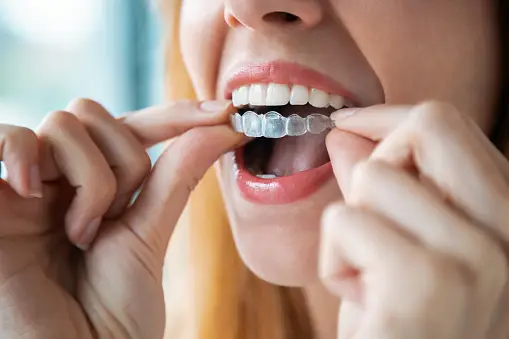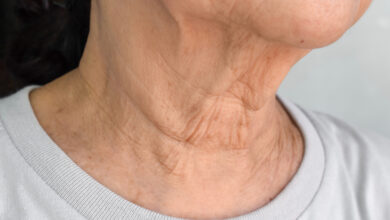Clear Path to Straight Teeth: Exploring Invisible Braces

1. Introduction
In recent years, there has been a significant shift in the field of orthodontics towards more discreet and convenient teeth straightening options. One such innovation that has gained immense popularity is invisible braces. These modern orthodontic devices offer a clear path to achieving straighter teeth without the hassle and visibility associated with traditional metal braces.
2. What are Invisible Braces?
Invisible braces, also known as clear aligners, are transparent, removable orthodontic appliances designed to straighten teeth without the need for metal wires and brackets. They are custom-made for each patient using advanced 3D imaging technology, allowing for a precise and comfortable fit.
3. How do Invisible Braces Work?
Invisible braces work by applying gentle pressure to gradually shift teeth into the desired position. Patients receive a series of aligners, each slightly different from the last, which they wear for about two weeks before switching to the next set. Over time, this process helps align teeth and correct bite issues effectively.
4. Benefits of Invisible Braces
- Discreet: One of the primary advantages of invisible braces is their discreet appearance, making them an attractive option for individuals who wish to straighten their teeth without drawing attention to their orthodontic treatment.
- Comfortable: Unlike traditional braces, invisible braces are made of smooth plastic, reducing the likelihood of irritation and discomfort.
- Removable: Invisible braces can be removed for eating, drinking, brushing, and flossing, allowing for better oral hygiene and greater flexibility in daily activities.
5. Types of Invisible Braces
There are several types of invisible braces available on the market, including:
- Clear Aligners: Custom-made plastic trays, such as Invisalign, that gradually move teeth into alignment.
- Lingual Braces: Brackets and wires attached to the back of the teeth, making them virtually invisible from the outside.
- Ceramic Braces: Tooth-colored brackets that blend in with the natural color of teeth, providing a more discreet option compared to traditional metal braces.
6. Popular Brands of Invisible Braces
- Invisalign: One of the most well-known brands of clear aligners, offering a comfortable and virtually invisible orthodontic solution.
- ClearCorrect: Another popular clear aligner system that provides customized treatment plans for patients of all ages.
- Incognito: Known for lingual braces that are customized to fit the unique shape of each patient’s teeth, providing effective treatment with minimal visibility.
7. Who is a Candidate for Invisible Braces?
Invisible braces are suitable for individuals with mild to moderate orthodontic issues, including:
- Crooked or misaligned teeth
- Gaps between teeth
- Overcrowding
- Underbites or overbites
8. Invisible Braces vs. Traditional Braces
While both invisible braces and traditional braces aim to straighten teeth, there are some key differences between the two:
- Appearance: Invisible braces are virtually invisible, while traditional braces are more noticeable.
- Comfort: Invisible braces are typically more comfortable to wear than traditional braces.
- Maintenance: Invisible braces are removable, making it easier to maintain good oral hygiene compared to traditional braces.
9. The Process of Getting Invisible Braces
The process of getting invisible braces typically involves the following steps:
- Initial consultation with an orthodontist to assess suitability for treatment
- 3D imaging and impressions to create custom aligners
- Fitting of the first set of aligners and instructions for wear
- Regular check-ups to monitor progress and receive new aligners
10. Maintaining Oral Hygiene with Invisible Braces
Proper oral hygiene is essential for maintaining the health of teeth and gums during orthodontic treatment with invisible braces. Some tips for maintaining oral hygiene include:
- Brushing and flossing regularly, taking care to clean both teeth and aligners
- Avoiding foods and drinks that may stain aligners, such as coffee and red wine
- Using a retainer cleaner or mild soap to clean aligners as needed
11. Potential Side Effects
While invisible braces are generally safe and well-tolerated, some potential side effects may occur, including:
- Temporary discomfort or soreness when wearing new aligners
- Irritation or sensitivity of the gums or tongue
- Changes in speech initially as the mouth adjusts to the presence of aligners
12. Cost Considerations
The cost of invisible braces can vary depending on factors such as the complexity of treatment, the duration of treatment, and the geographic location of the orthodontic practice. On average, invisible braces may cost between $3,000 and $8,000.
13. Success Stories
Many individuals have achieved remarkable results with invisible braces, enjoying not only straighter teeth but also improved confidence and self-esteem. Real-life success stories and testimonials can provide inspiration for those considering orthodontic treatment.
14. Frequently Asked Questions
- How long does treatment with invisible braces typically take?
- Are invisible braces covered by dental insurance?
- Can I eat and drink with invisible braces?
- Will I need to wear a retainer after treatment?
- What should I do if I lose or damage my aligners?
15. Conclusion
Invisible braces offer a clear path to straighter teeth for individuals seeking a discreet and convenient orthodontic solution. With their numerous benefits, including discretion, comfort, and removability, invisible braces have revolutionized the field of orthodontics, providing patients with an effective and hassle-free way to achieve a confident smile.



